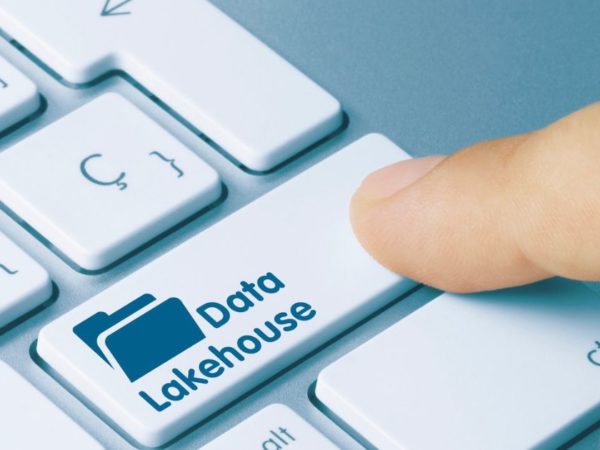Data lineage provides a path that shows where data has been and how it has been transformed along the way.
Data lineage has been an important concept in data management for many years. Still, it has become increasingly important in recent years with the growth of big data, cloud computing, and the increasing complexity of data pipelines.
The concept of data lineage can be traced back to the early days of data warehousing and ETL (Extract, Transform, Load) processes. Understanding how data was changed and where it came from became more crucial as data warehouses grew bigger and more sophisticated.
This led to the development of data lineage tools that could track data flow through the pipeline and provide a visual representation of data flow. Let’s explore what data lineage is all about and why it is important.
What is Data Lineage?
Data lineage is the process of tracking the origin and movement of data throughout its lifecycle. It includes information about where data came from, where it has been, and where it is going, as well as any changes made along the way.
Data lineage is a critical aspect of data management and is important for various reasons.
- Understanding the history of data, including how it has been transformed and used over time.
- To Maintain data quality and ensure compliance with regulatory requirements.
- Enabling impact analysis of changes in data and processes.
- Helps in Auditing and Governance to make informed business-level decisions based on the data.
- Improves the overall efficiency and effectiveness of data management processes.
How does Data Lineage work?
Data lineage typically includes information about the data origin, the systems and processes that are used to transform and move the data, and the final destination of the data.
This information is usually represented graphically, with each node representing a system or process and each edge representing data flow between nodes.
Metadata is a key component of data lineage because it provides information about the data assets and how they flow through the data pipeline.
Data lineage tools use metadata to create a visual representation of the data flow, which allows users to see how data is transformed and used throughout the organization. This helps users to determine how useful the data can be to make more informed decisions.
Implementation of Data Lineage
The following steps are often involved in implementing data lineage in an organization.
#1. Define the data sources
Identify all the systems and databases that contain the data you want to track. This includes identifying the various data sources such as files, APIs, and cloud services.
#2. Collect metadata
The next step is to gather information about the data, such as its structure, format, and location. This metadata is used to understand the characteristics of the data and how it is used.
#3. Identify data flows
Map out the flow of data from its source to its destination, including any transformations or processing that occur along the way, which makes it easier to comprehend how data is altered and applied across the organization.
#4. Track data access
Monitor and log who is accessing the data to ensure data security and compliance.
#5. Store and visualize the lineage
Store the collected metadata and data flow information in a central repository, and use visualization tools to display the lineage for easy understanding and analysis.
#6. Implement an automated solution
Automation will help you to ensure data lineage is being captured and tracked and also help to reduce errors and improve efficiency.
#7. Review and update
Regularly review the lineage information to ensure it is accurate and up-to-date, and update it as necessary.
It is important to note that each organization may have specific requirements and constraints requiring additional steps or modifications to the implementation process.
Data Lineage Use Cases
Data modeling
Organizations can generate visual representations of multiple data items and their connections using data lineage. The links between data components can be modeled to show the dependencies present throughout the data ecosystem.
This makes it easier for analysts and data scientists to understand the statistical models and to conduct insightful and timely analyses. And here is a detailed post on data modeling.
Compliance
It is utilized in compliance processes for auditing, enhancing risk management, and assuring that data is processed and maintained in accordance with data governance guidelines.
Impact analysis
Conducting a detailed impact assessment is made simpler by data lineage. You can quickly determine the upstream and downstream effects of any specific modification by using lineage diagrams. You can look deeper and observe the effects at the level of a table or business report.
Root cause analysis of data issues
Data lineage can be used to quickly identify the source of data issues by tracing how data flowed through systems.
This can be especially useful in complex data environments where data is collected from multiple systems and flows through multiple processes before it reaches its final destination.
It can also track data changes over time and detect patterns or anomalies that could indicate a problem. This can help organizations prevent data issues from happening again in the future.
Data Lineage Techniques
Here are a few popular techniques for performing data lineage on important datasets.
#1. Pattern-Based Lineage
Without managing the code used to generate or change the data, this technique identifies patterns in the data and applies them to deduce its origin and history.
It is built on analyzing metadata for tables and business reports using pattern recognition. This method can be used across any database technology. Still, it is not always accurate. It can miss connections between datasets if the data processing logic is hidden in the programming code and is not apparent in human-readable metadata.
Another limitation is that it can be computationally intensive if the data is at scale and the metadata is complex.
It is important to note that this technique can be used in conjunction with other lineage techniques to provide a complete view of data lineage.
#2. Lineage by Information Tagging
This method assumes that data has been marked or tagged somehow by a transformation engine. And then, it follows the tag from the beginning to the end of the process to discover lineage.
This method is only effective if you have a consistent transformation tool that controls all data movement and is aware of the tagging structure used by the tool.
It involves adding tags or markers to the data, which can then be used to track its lineage as it moves through different systems and processes.
The tags can include information such as the name of the source system, the date and time the data was extracted, the data’s format, and any transformations or operations that were performed on the data.
#3. Lineage by Parsing
This technique involves automatically reading the logic for data processing. It performs complete end-to-end tracing by reverse engineering the transformation logic, which can be useful for identifying data dependencies as well as for detecting data quality issues.
However, it is complex to deploy because it needs to understand all the programming languages and tools used for data transformation, such as ETL logic, XML-based solutions, etc.
Additionally, this technique requires a good understanding of how the data flows through the organization’s systems and is dependent on the availability of logs and the ability to analyze them. It also requires a team with knowledge of data management, programming, and data analysis to be effective.
#4. Self-Contained Lineage
Independent lineage refers to the ability of a system or information framework to trace the history of its components and dependencies independently, without the need for external records or information.
It is a self-contained process where the information is stored, processed, and managed in a centralized manner for full control over metadata.
This method has a drawback since it only takes into account the data that is present in the controlled environment and ignores any outside influences or actions that might have an impact on the data.
Learning Resources
And here are some of the external resources to learn about data lineage.
#1. Data Lineage from a Business Perspective
This book provides a clear metamodel of data lineage and also demonstrates best practices for implementation, and covers key areas of usage, such as data governance, data quality, and compliance.
Overall, it is a valuable resource for business professionals looking to understand the importance of data lineage and how to implement it in their organizations.
#2. Prescriptive Data Lineage A Complete Guide – 2020 Edition
This book covers the topic of data lineage in-depth and provides a comprehensive guide for implementing it in an organization.
The book’s contents are well-organized and include real-world examples to emphasize important principles.
#3. Data Lineage A Complete Guide – 2021 Edition
This book is aimed at both technical and business professionals looking to gain a deeper understanding of data lineage and how to use it in their organizations effectively.
It offers the most up-to-date information and insights on the topic, with new information and case studies that reflect the latest developments in the field.
Final Thoughts
Data Lineage is a critical tool for ensuring the reliability of data. This is especially used in industries where key decisions rely on accurate data. Without proper technology and processes, tracking data can be difficult and resource-intensive.
It enables organizations to track the data stream from both endpoints, ensuring data consistency and accuracy and ultimately improving the quality of decision-making.
I hope you found this article helpful in learning about data lineage and the techniques. You may also be interested in learning about the best agentless network monitoring tools.



